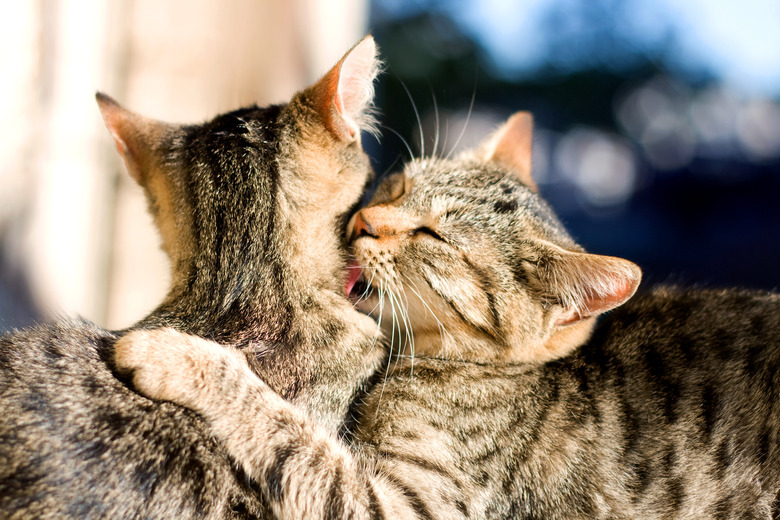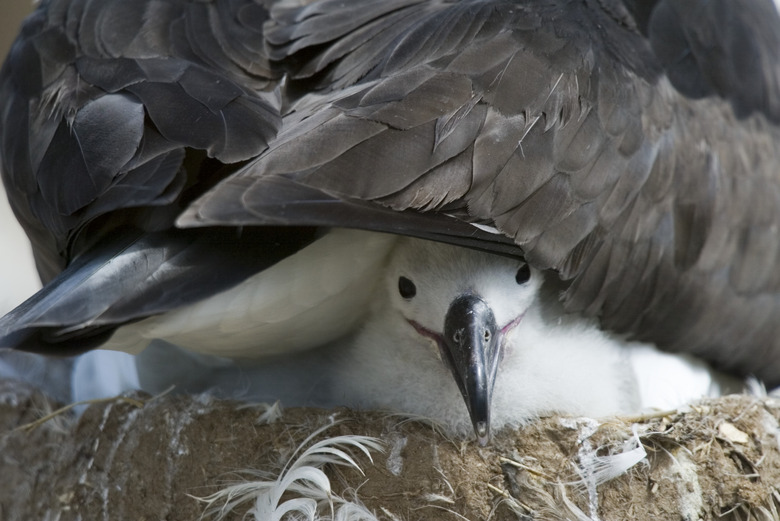List Of The Types Of Animal Behavior
The study of animal behavior, called ethology, is a broad field, encompassing both instinctual and learned behaviors as well as abnormal behaviors. Within any particular species of animal, certain behaviors may be present in all members while others are more specific to certain individuals, locations or situations. Even the most simple of life forms exhibit behavioral activity, and whether the behavior is normal or abnormal can provide insight into their mental state.
Instinctual behavior
Instinctual behavior
One type of instinctual behavior is fixed action patterns, which are behaviors the animal is compelled to engage in. For instance, some birds will raise the chicks of other birds if the eggs are put in their nests during nesting season, because caring for an egg is a fixed action pattern. Another instinctual behavior is imprinting, wherein a baby animal accepts a person, or even an item, as a surrogate mother. Sexual behavior is also instinctual, bolstered by play, which helps animals learn courtship and mating skills. Many of these behaviors are dictated by specific body systems, like the nervous system, which responds to stimuli in the environment.
Learned behavior
Learned behavior
Learned behavior is important both for wild animals, who must learn specific and new ways to survive, and for domestic animals that we seek to train. Animals can learn to anticipate that an action will have a predictable outcome through trial and error, such as dog learning to sit for a treat. This is called operant conditioning. They can also learn that one event precedes another, such as the sound of a metal food bowl being moved signaling food being served, which is known as associative learning. Animals also learn a lot through watching others and mimicry. All of these behaviors allow an animal to adapt to new situations and problems.
Abnormal behavior
Abnormal behavior
Identifying behavior patterns enables people to determine when animals are behaving abnormally. These abnormal behaviors might simply be annoying to animal owners; however, in other instances they may also be dangerous for the animal and others or even threaten their very survival. For example, inappropriately aggressive dogs, which might be suffering from disease or trauma, are potentially dangerous to themselves and others. The behavior may be addressed if it is identified as abnormal and normal behavior is reestablished. More important to species survival are mating and raising offspring, and in these cases abnormal behavior that leads to failure to mate or care for offspring can present a threat to the animal's long-term survival.
References
Cite This Article
MLA
Craney, Ann. "List Of The Types Of Animal Behavior" sciencing.com, https://www.sciencing.com/list-types-animal-behavior-6567011/. 24 April 2018.
APA
Craney, Ann. (2018, April 24). List Of The Types Of Animal Behavior. sciencing.com. Retrieved from https://www.sciencing.com/list-types-animal-behavior-6567011/
Chicago
Craney, Ann. List Of The Types Of Animal Behavior last modified March 24, 2022. https://www.sciencing.com/list-types-animal-behavior-6567011/



